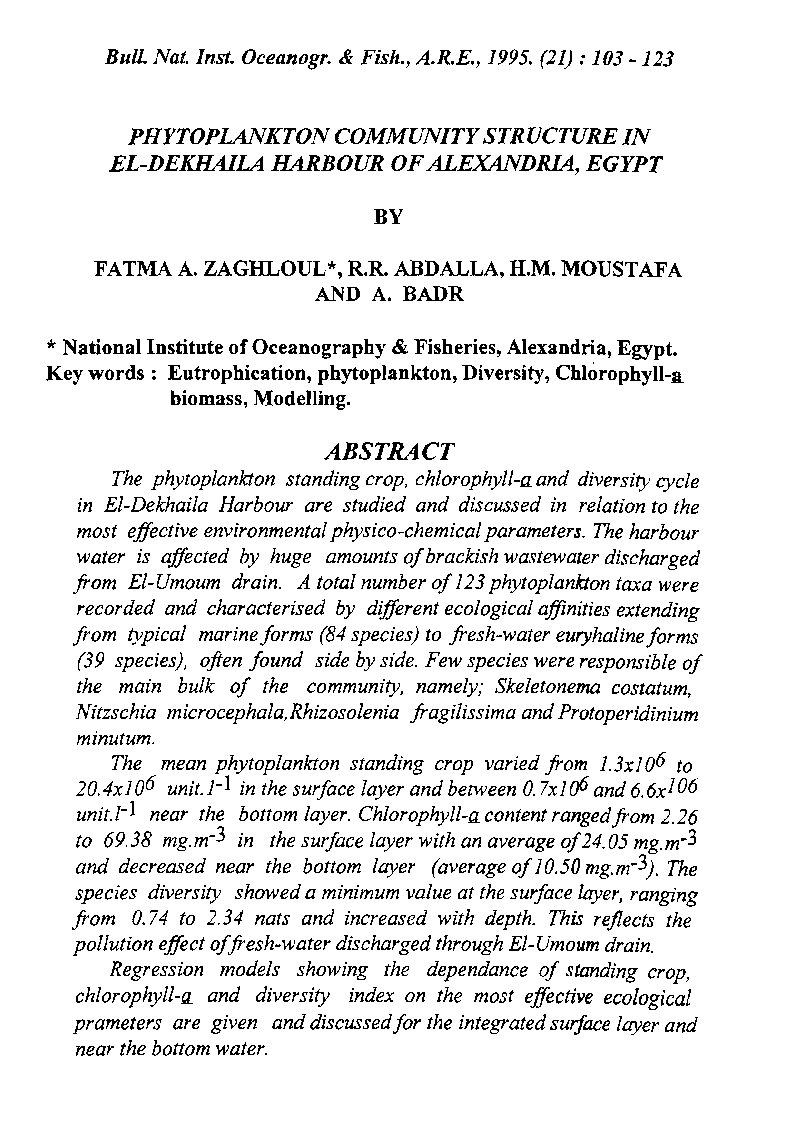Categories
vol-21PHYTOPLANKTON COMMUNITY STRUCTURE IN
EL-DEKHAILA HARBOUR OFALEXANDRIA, EGYPT
BY
FATMA A. ZAGHLOUL*, R.R. ABDALLA, H.M. MOUSTAFA
AND A. BADR
* National Institute of Oceanography & Fisheries, Alexandria, Egypt.
Key words: Eutrophication, phytoplankton, Diversity, Chlorophyll-a.
biomass, Modelling.
ABSTRACT
The phytoplankton standing crop, chlorophyll-a.. and diversity cycle
in EI-Dekhaila Harbour are studied and discussed in relation to the
most effective environmental physico-chemical parameters. The harbour
water is affected by huge amounts ofbrackish wastewater discharged
from EI-Umoum drain. A total number of123 phytoplankton taxa were
recorded and characterised by different ecological affinities extending
from typical marine forms (84 species) to fresh-water euryhaline forms
(39 species), often found side by side. Few species were responsible of
the main bulk of the community, namely; Skeletonema costatum,
Nitzschia microcephala,Rhizosolenia fragilissima and Protoperidinium
minutum.
The mean phytoplankton standing crop varied from 1.3×106 to
20.4×106 unit.1-1 in the surface layer and between O. 7×106 and 6.6×106
unit.I-1 near the bottom layer. Chlorophyll-a.. content rangedfrom 2.26
to 69.38 mg.m-3 in the surface layer with an average of24.05 mg.m-3
and decreased near the bottom layer (average of10.50 mg.m-3). The
species diversity showed a minimum value at the surface layer, ranging
from 0.74 to 2.34 nats and increased with depth. This reflects the
pollution effect offresh-water discharged through EI-Umoum drain.
Regression models showing the dependance of standing crop,
chlorophyll-a. and diversity index on the most effective ecological
prameters are given and discussedfor the integrated surface layer and
near the bottom water.







